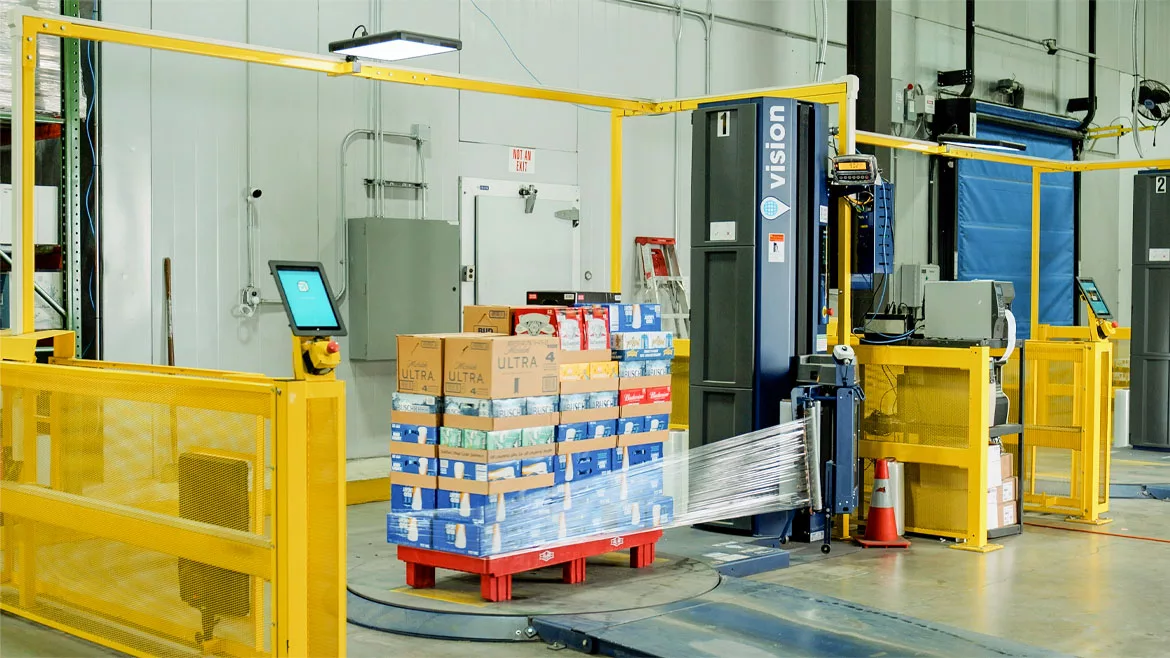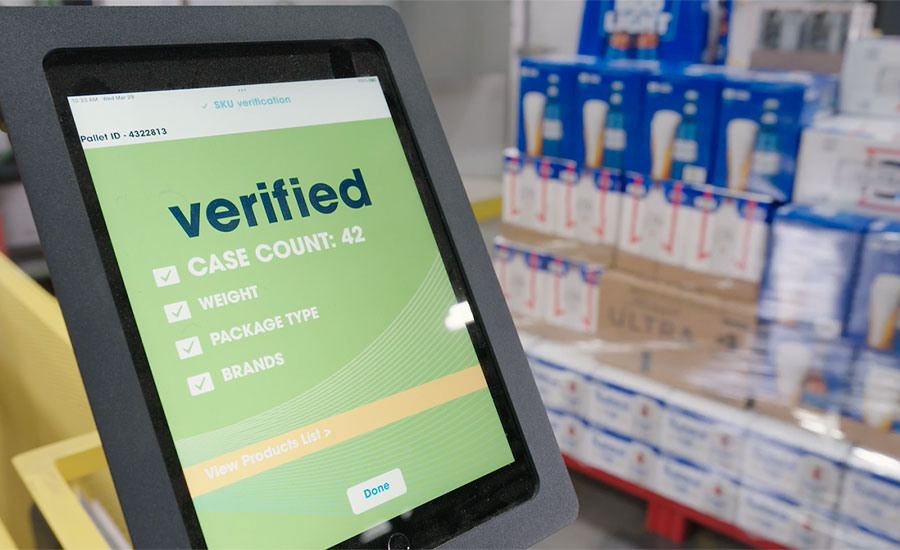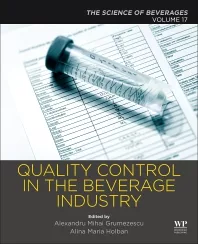Operations
Beverage operations rely on reusable packaging
Reusable packaging systems deliver cost- and environmentally-friendly option

Image courtesy of Rehrig Pacific
In the videogame series Guitar Hero, the Rock Meter uses a needle to show how well the user is playing. The needle will move in the meter’s three regions: green, yellow or red, with green being the best. It is up to the player to keep the Rock Meter’s needle up in the green area for the entire song. If the player lets the needle drop to red, the crowd will boo them offstage before the song concludes.
While it’s not always used in terms of rocking, the idiom to “move the needle” describes how a certain action has a measurable outcome.
Andrew Resler, head of special projects operation at Rehrig Pacific, Los Angeles, notes that reusable packaging systems help operations to “move the needle” in terms of sustainability initiatives. This is because it is built to live and cycle within a supply chain for years, he notes.
“It displaces one-way packaging and improves life-cycle metrics compared to one-way packaging with every use,” Resler explains. “It also allows companies to improve the recycled content of their packaging and recycled material goals or goals aimed at reducing virgin plastic/raw materials.
“Well-designed reusable packaging offers improved protection of the product being shipped and can reduce or eliminated damaged products,” he continues.
Further, when products have little to no damage, users can reduce the amount of solid waste generated within their supply chains, Resler says. He suggests that reusable packaging provides the best opportunity to create powerful and lasting circularity models.
John Rader, product manager for retail supply chain pallets at ORBIS Corp., Oconomowoc, Wis., also notes the many ways in which reusable packaging systems can help operations achieve sustainability goals.
“Consumers are focused on increasing sustainability in the supply chain, and this preference is pushing companies to reevaluate their current supply chain packaging and explore reusable packaging solutions,” he says. “Reusable packaging solutions, like shells and pallets, are more durable than a corrugated pad, tray or wood pallet. In better protecting the product, manufacturers can minimize loss and, as a result, further reduce their waste.”
Rader explains that reusable beverage shells have a long service life and provide brands with a fully reusable option for shipping bottles into retail. Companies can save money over the life of the packaging because of its reusability when compared with single-use corrugated packaging.
“This also eliminates the disposal of the single-use corrugated packaging and wrap at retail,” he says. “Reusable packaging can help operations of all kinds optimize for automation, eCommerce fulfillment, transportation and storage.”
Rader goes on to mention that reusable packaging supports the “three Rs in the environmental hierarchy:” reduce, reuse and recycle. He adds that some reusable packaging providers might take sustainability a step further by offering alternative material streams that increase the amount of recycled content in packaging.

Impacts and influences
Many factors weigh on the reusable packaging systems market.
Rehrig Pacific’s Resler describes automation as being “everywhere these days,” and notes that it can be finicky depending on the system.
“Today’s high-speed and high-volume production lines and fulfillment centers are built to very specific standards and require well-engineered and high-quality reusable containers to keep the operation running predictably and at high efficiency,” he explains. “The push for more automation also creates a demand for this type of packaging and manufacturers that can engineer and integrate containers into these highly sophisticated systems.”
ORBIS’ Rader says that, as more companies turn to automation solutions, they need products that will interface with such systems. And in the same way that automation addresses the labor shortage, he feels that it can help companies eliminate human error to improve accuracy.
Rader notes that, because reusable packaging solutions are dimensionally consistent, they create a smooth interface between automated systems and product loads, resulting in reduced system downtime while driving repeat performance.
“Other advantages of reusable packaging that make these solutions fit for automated environments include good cube efficiency, associate-friendly features like fingertip handles, the ability to incorporate detailed features like drain holes and automation locators, significant use cycles and more,” he says.
In the automation space, Rader states that ORBIS introduced the 40 x 48 Odyssey Low Profile (LP) pallet, which is a reusable pallet designed to provide repeatable performance with automated equipment. Being a LP pallet, it “aims to bring the added benefit” of seamlessly fitting in with alternate pallets in existing pallet pools.
“Reusable packaging solutions, like shells and pallets, are more durable than a corrugated pad, tray or wood pallet. In better protecting the product, manufacturers can minimize loss and, as a result, further reduce their waste.”
– John Rader, product manager, retail supply chain pallets, ORBIS Corporation
The Odyssey LP improves load stability with its steel reinforcements and molded-in frictional elements to minimize load shifting, product load damage and pallet slippage off fork equipment, Rader explains. It’s designed to carry edge racked loads of more than 2,800 pounds, he notes.
Beverage trends, such as SKU proliferation and varying pack sizes, also are impacting reusable packaging systems.
Rader states that plastic reusable packaging has been “embedded” in the inbound beverage market for quite some time because it is an ideal application with a closed-loop system. In recent years, the market has grown, as at-home consumption has increased.
“The increase in the number of SKUs and co-packers building variety packs have added complexity to the returnable packaging supply chain,” he says. “The additional suppliers have caused packaging to turn at a slower rate and have put more uncertainty on the container manufacturers. In turn, it has driven up inventory builds to offset and keeps packaging tied up for longer periods of time.”
Rader notes that varying sizes of packaging, such as sleek cans, means that plastic packaging can be specified for each application. He points to the ORBIS 37 x 37 BEV FG pallet as being “fully compatible” with all shell types, which can help customers keep up with beverage market trends.
Rehrig Pacific’s Resler notes that large beverage companies, primarily those with national bottling and distribution networks, “still have tremendous opportunities” to highlight circular packaging models for small and large bottle containers and reusable pallets.
“Shifts to smaller volume bottles in multipack configurations can present compatibility challenges to reusable packaging (shell) when packaging is not considered in the upfront design of the bottle,” he explains. “Not every beverage distribution channel and package type is ideal for reusable packaging. Regional bottling and distribution networks present big opportunities to introduce reusable packaging and promote strong reusable/circular packaging models.”
Additional aspects to consider
Aside from automation and beverage trends, more components should be considered when improving existing products and creating new ones, experts note.
ORBIS’ Rader notes that, as eCommerce operations continue to expand, it’s imperative to focus on efficient and safe movement of products. He says that’s where reusables “can come in to offer logistics benefits.”
With rising fuel and transportation costs, Rader explains how nestable and collapsible packaging solutions can help companies save space and reduce costs. He uses the example of stacking containers to a truck’s full capacity, improving cube efficiency to reduce the number of trucks needed. The reusable packaging can collapse when empty to optimize the trailer.
“Unlike fiber corrugated and wood solutions that can harbor contaminants and become compromised due to moisture, the all-plastic construction and smooth design of reusables make them hygienic and easy to clean,” Rader says. “With plastic, you can also avoid the potential for downtime from corrugated dust blocking eye-readers or an out-of-spec/deformed box jamming the system.”
Rehrig Pacific’s Resler explains that an important aspect of improving or developing a product is capturing and engaging the right stakeholders. With the sophisticated systems of today, he says that any change can have a detrimental impact.
“Ensuring the right stakeholders are involved in developing, testing and implementing a new reusable package or revision is crucial,” Resler explains. “Some systems contain larger floats of new and old packaging and packaging that could be made from multiple suppliers. Changes within these systems add a layer of complexity that deserves a fair amount of attention to ensure a successful launch or transition.”
He also notes which technology innovations are being implemented to protect products and offer accurate traceability. Mainly, Resler says, readable barcode labels are the simplest way to do so, and continue to be used even among the most sophisticated high-speed readers within the supply chain.
“RFID tags have also been used to add traceability to reusable packaging and allow for the automated reading of individual and palletized packages,” he says. “A significant area of focus is on the equipment that reads these tags and at what points the packaging is being read within the system to improve visibility. Along with the RFID tags, temperature sensing technology is an important focus area of reusable packaging, specifically for food safety and cold chain requirements.”
Resler explains that temperature technologies work with vision platforms that capture data on the product placed in or on a reusable package or pallet, and then the technology associates the product information to the reusable package or pallet’s unique barcode or RFID tag. The data can then be used for traceability, quality control or customer verifications, driving efficiencies throughout the supply chain.
ORBIS’ Rader also states that RFID allows customers to track their packaging and its contents automatically, noting that the technology works seamlessly with automated systems and reduces inefficiency and waste.
Rader says that, especially in today’s complex supply chains, it’s important that packaging is available “when and where you need it.”
“Effective packaging management helps food and beverage suppliers experience the benefits of plastic pallet systems while eliminating the upfront investment and day-to-day complexities of managing, tracking and cleaning packaging,” he explains. “For example, ORBIS Reusable Packaging Management significantly cuts the time and effort needed to track, retrieve, clean and inventory packaging assets. This systems gives companies the freedom to focus on core competencies and positively impacts business operationally, financially and environmentally.”
What’s on the horizon
As for what the future looks like for reusable packaging systems, Rehrig Pacific’s Resler predicts that automation and technology will remain ongoing focuses. He suspects more automation, robots, artificial intelligence (AI) and an ongoing demand for supply chain efficiencies.
“Sustainability efforts will also continue to shape packaging design and decision-making on packaging and reusable packaging systems,” Resler says. “To drive supply chain efficiencies and capture sustainability data, we should expect more focus on asset-tracking platforms and the amount of data they capture and convert into more powerful business analytics.”
Similarly, ORBIS’ Rader suggests that automation, rising labor costs, consumer demands for on-time delivery, the need for operational efficiencies and growing sustainability goals will all impact what’s next from reusable packaging systems.
“Sustainability, driven by both corporate and government mandates, plays a pivotal role in steering companies toward implementing reusable solutions,” he concludes.
Looking for a reprint of this article?
From high-res PDFs to custom plaques, order your copy today!








